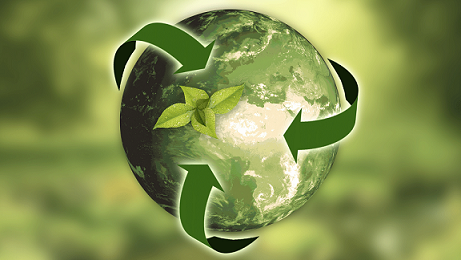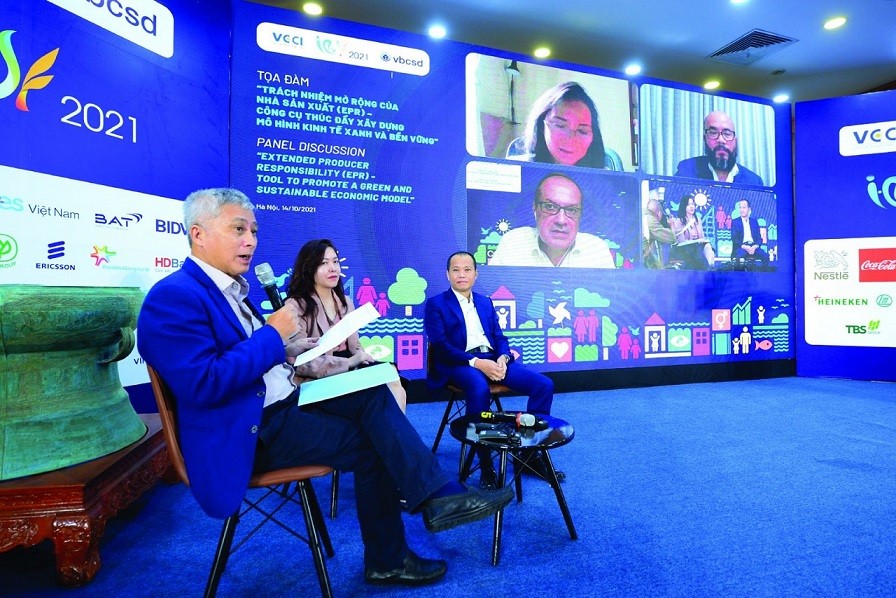
Circular economy - An inevitable direction to realize the goals of sustainable development
Latest
 |
| The circular economy is a practical tool to help Viet Nam realize the goal of sustainable production and consumption. (Source: tontoton) |
The Socio-Economic Development Strategy for the period of 2021 - 2030, with a vision to 2045 at the 13th National Party Congress has underlined the promotion of the development of a circular economy model for integrated and efficient use of outputs of the production process.
What is the circular economy?
The concept of a circular economy was first used formally by Pearce and Turner in 1990. It refers to a new economic model based on the basic principle that “everything is an input to something else", which is entirely different from the traditional linear economy's view.
The Ellen MacArthur Foundation described the circular economy as an industrial system that restores or regenerates by intent and design.
It transitions to using renewable energies instead of hazardous chemicals and waste that degrades reusability through the superior design of materials, products, systems, and in this scope is the business models.
Simply put, a circular economy is to turn the waste output of one industry into an input resource of another one or internally circulating within a business.
A global trend
According to experts, the world has now only brought 8.6% of production output into circulation, while in 2019, this figure was 9.1%. Without close monitoring of this roadmap, the number of resources consumed by 2060 will be double that of 2015.
Therefore, in the current context, the transition from a linear economy to a circular one is essential for all countries worldwide.
In Asia, China adopted the Circular Economy Policy Program (2017).
In Europe, strategies such as the EU Action Plan for the Circular Economy in 2015 and the Plastics Strategy 2018 have also been implemented. Finland, France, Slovenia, Germany, and Italy have announced strategies and roadmaps to achieve the goals.
Intercontinental cooperation also applies the circular economy, with more than 200 enterprises committed to the circular economy of plastics (2019). China and the EU also signed the Memorandum of Understanding on Circular Economy Cooperation, in 2018.
Circular economy in Viet Nam
As one of the countries most affected by climate change, an essential task towards sustainable development of Viet Nam is the transition to sustainable consumption and production. Circular economy as a practical tool will help Viet Nam realize this goal.
The national strategy for green growth for 2021-2030, with a vision to 2050, sets out three essential goals: reducing emissions, greening economic sectors and greening lifestyles, and promoting sustainable consumption.
The long-term goal in green growth and climate change response is to reduce greenhouse gas emissions per GDP.
Accordingly, the Strategy sets a milestone that by 2030, the intensity of greenhouse gas emissions per GDP will decrease by at least 15% compared to 2014. Further, by 2050, the power of greenhouse gas emissions per GDP will be reduced by at least 30 % compared to 2014.
 |
| Experts at the seminar "Circular economy - The future of equitable and sustainable economic growth". (Photo: Dien dan Doanh nghiep) |
At the recent seminar "Circular economy - The future of equitable and sustainable economic growth", Mr. Nguyen Quang Vinh, General Secretary of the Viet Nam Chamber of Commerce and Industry (VCCI), Secretary-General cum Executive Vice Chairman of the Viet Nam Business Council for Sustainable Development (VBCSD) said that, in recent years, the concept of circular economy has become much closer in the business community.
Circular economy brings a new perspective on the use of raw materials in the direction of more efficient and economical; at the same time, constantly remind people of using finite resources such as water, energy, raw materials, and even food with a longer life cycle, achieving higher value than the current traditional way.
The economy will achieve a closed cycle with the overall and comprehensive participation of manufacturing industries, occupations, and fields through information sharing, application of new business models, the combination of the supply chains to achieve scientifically calculated goals with the support from the legal system and management regulations from the government.
Also, at the seminar, Mr. Mai The Toan - Deputy Director, Institute of Strategy and Policy on Natural Resources and Environment, gave recommendations for the roadmap for building a circular strategy at enterprises from the perspective of senior management. Accordingly, every business needs to go through the following steps: improvement in the production process, improvement in product, and business model.
At the event, speakers and business representatives shared many new and innovative models; initiatives to support businesses in implementing a circular economy in Viet Nam in the past time such as PRO Viet Nam, La Vie, Nestlé Viet Nam, Coca-Cola, BAT Viet Nam and HEINEKEN Viet Nam...
The delegates also affirmed that the social responsibility of manufacturers is and will become a tool to promote the construction and development of green and sustainable economic models.
The workshop introduced a report on research results conducted by VBCSD to assess the current status and potential of the circular economy of the FMCG industry in Viet Nam, focusing on the non-food and beverage sector from May to September 2021.
The study was conducted with 100 medium and large enterprises in manufacturing, processing ingredients and products of 9 product groups in the food and non-alcoholic beverage industry based on the Circulytics method of the Ellen MacArthur Foundation.
Research results have shown that 90% of surveyed enterprises have converted to a circular economy model at different levels, focusing on prioritizing the use of raw materials, infrastructure and use of packaging.
According to the research report, businesses in the fast-moving consumer goods industry have been actively preparing to transition to a circular economy model. However, they have still lacked cooperation and communication activities and have not paid enough attention and given proper priority to the transformation of energy use.
























